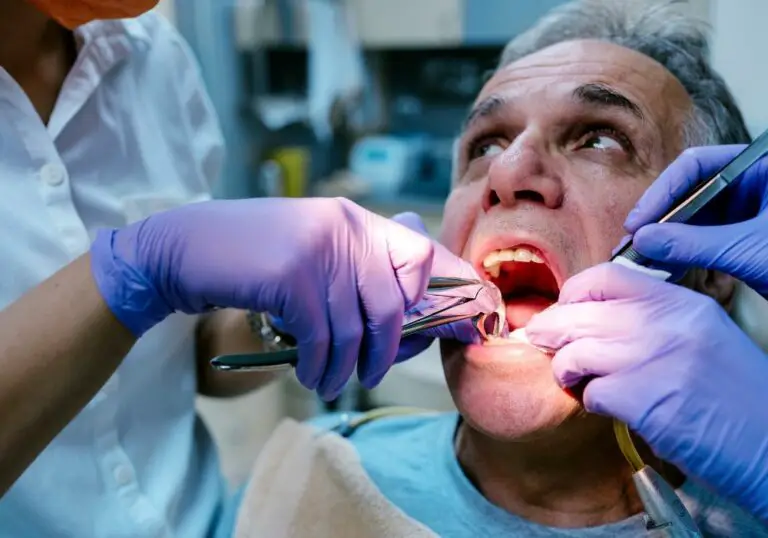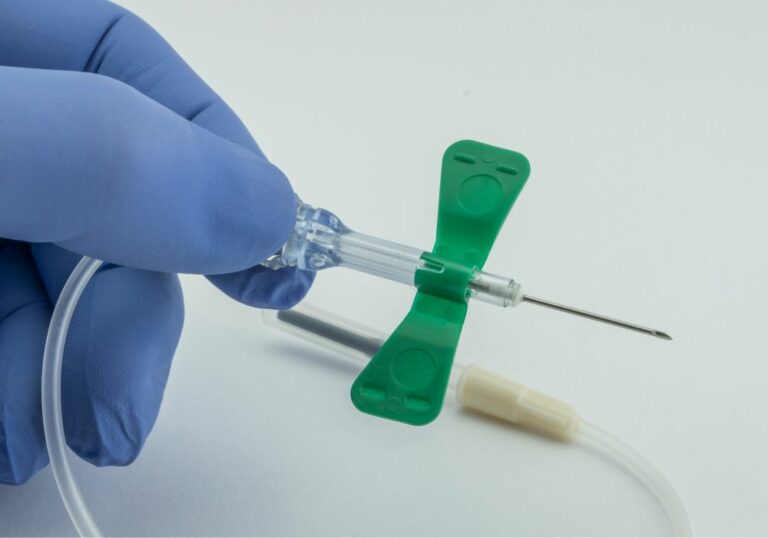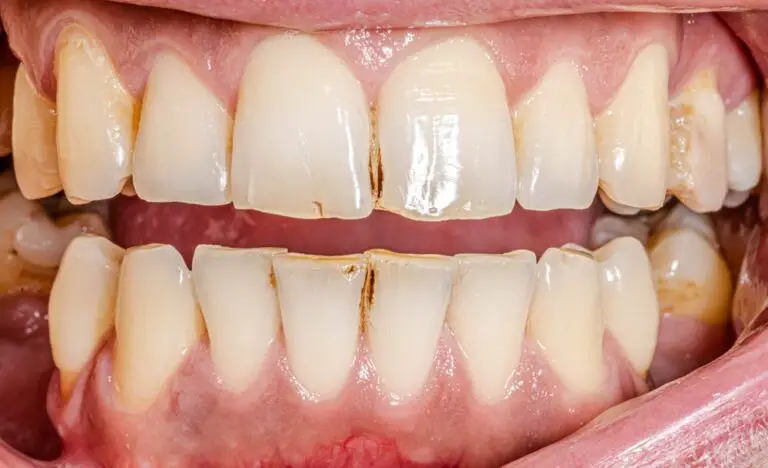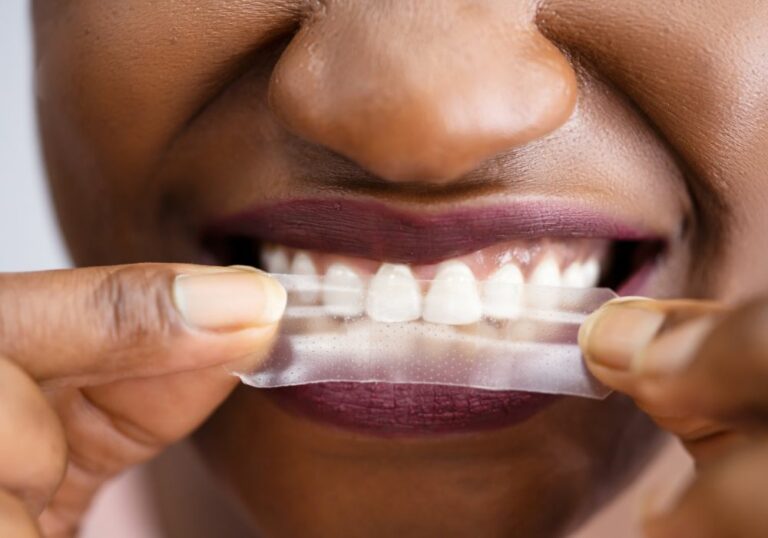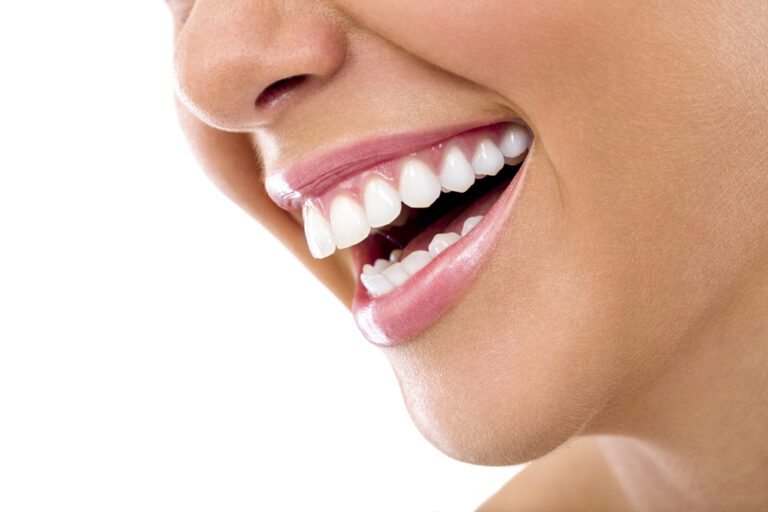Are you tired of feeling self-conscious about your stained teeth? Do you want to achieve a brighter smile without damaging your tooth enamel? The good news is that you can whiten your teeth without removing enamel. There are several safe and effective ways to achieve a brighter smile naturally, without resorting to harsh chemicals or procedures.
Tooth enamel is the hard, outer layer of your teeth that protects them from damage and decay. While enamel is incredibly strong, it can be eroded by acidic foods and drinks, as well as by certain dental procedures. Once enamel is lost, it cannot be restored. This is why it’s so important to take good care of your teeth and avoid anything that could damage your enamel. Fortunately, there are many natural ways to whiten your teeth that are gentle on your enamel and safe for long-term use.
In this article, we will explore the different methods you can use to whiten your teeth without removing enamel. From diet changes to natural remedies, we’ll cover everything you need to know to achieve a brighter, healthier smile. Whether you’re looking for a quick fix or a long-term solution, we’ve got you covered. So, let’s get started!
Understanding Tooth Enamel
Tooth enamel is the hard, protective outer layer of your teeth. It is the hardest substance in the human body, even harder than your bones. Enamel covers the crown of the tooth, which is the visible part of the tooth above the gum line. It helps protect your teeth from decay and damage.
Enamel is made up of minerals, primarily hydroxyapatite, which is a form of calcium phosphate. It does not contain any living cells, which means that once it is damaged or lost, it cannot be regenerated by the body. Therefore, it is essential to take care of your enamel to prevent damage and decay.
The enamel on your teeth can be damaged by many factors, including acid erosion, physical wear and tear, and tooth decay. Acid erosion is caused by the acids in foods and drinks, such as citrus fruits, soda, and sports drinks. Physical wear and tear can be caused by grinding or clenching your teeth, using a hard-bristled toothbrush, or biting on hard objects like pencils or ice.
When enamel is lost or damaged, it can cause sensitivity, discoloration, and even tooth decay. Therefore, it is important to take steps to protect your enamel and prevent damage. This can include:
- Brushing your teeth twice a day with a soft-bristled toothbrush and fluoride toothpaste
- Using a mouthguard if you grind or clench your teeth
- Avoiding acidic foods and drinks
- Drinking plenty of water to help neutralize acids in your mouth
- Regular dental checkups and cleanings to identify and treat any enamel damage or decay
While it is possible to whiten your teeth without removing enamel, it is important to be careful when using whitening products. Some whitening treatments can be harsh on your enamel and cause sensitivity or damage. Therefore, it is best to consult with your dentist before using any whitening products to ensure that they are safe for your teeth.
The Importance of Preserving Enamel
Your tooth enamel is the hard, protective outer layer that covers your teeth. It is made of minerals, primarily hydroxyapatite, and is the hardest tissue in your body. Enamel protects your teeth from damage and decay, and it also gives your teeth their white, shiny appearance.
When you whiten your teeth, it is important to preserve your enamel. Enamel loss can lead to tooth sensitivity, discoloration, and even tooth decay. Fortunately, there are ways to whiten your teeth without removing enamel.
Here are some reasons why preserving enamel is important:
- Enamel protects your teeth from damage and decay. It is the first line of defense against harmful bacteria and acid that can cause cavities and gum disease.
- Enamel gives your teeth their white, shiny appearance. When enamel is worn down, your teeth can become discolored or yellowed.
- Enamel helps to insulate your teeth from hot and cold temperatures. When enamel is worn down, your teeth can become sensitive to temperature changes.
- Enamel is irreplaceable. Unlike other tissues in your body, enamel cannot regenerate or heal itself. Once it is gone, it is gone for good.
To preserve your enamel while whitening your teeth, it is important to choose a safe and effective whitening method. Professional, in-office whitening is generally considered the safest and most effective way to whiten your teeth without removing enamel. At-home whitening treatments, such as custom-fitted trays, can also be effective if used properly.
It is also important to avoid abrasive toothpastes and brushing too hard, as these can wear down your enamel over time. Instead, use a soft-bristled toothbrush and a non-abrasive toothpaste to gently clean your teeth and preserve your enamel.
By preserving your enamel, you can enjoy a brighter, healthier smile without compromising the health of your teeth.
Common Teeth Whitening Methods
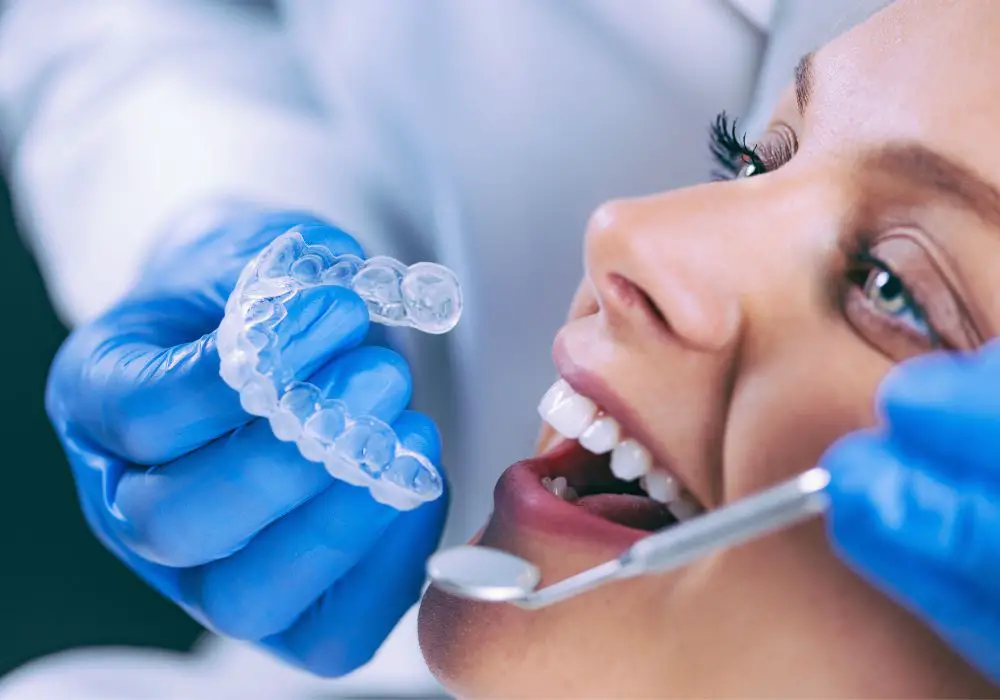
If you’re looking to whiten your teeth, there are a number of methods available to you. Here are three of the most common:
Bleaching
Bleaching is a popular method for whitening teeth. It involves using a chemical agent, typically hydrogen peroxide, to remove stains from the surface of your teeth. While bleaching can be effective, it’s important to note that it can also be damaging to your enamel if used too frequently or in too high a concentration.
Whitening Toothpastes
Whitening toothpastes are another common method for whitening teeth. These toothpastes contain special abrasives that help to remove surface stains from your teeth. While they can be effective, they typically take longer to produce results than other methods, and they may not be as effective on deeper stains.
Whitening Strips
Whitening strips are a popular over-the-counter method for whitening teeth. These strips are coated with a bleaching agent and are applied directly to your teeth. They can be effective, but they may also cause tooth sensitivity and gum irritation if used too frequently or left on for too long.
Overall, there are a number of methods available for whitening your teeth. It’s important to choose a method that’s safe and effective for your individual needs, and to follow all instructions carefully to avoid damaging your enamel.
Potential Risks of Teeth Whitening
Teeth whitening can be a safe and effective way to brighten your smile, but it’s important to be aware of the potential risks involved. Here are some things to keep in mind:
Sensitivity
Whitening products can sometimes cause tooth sensitivity, especially if you have existing dental problems or if you use them too frequently. This sensitivity can be temporary or long-lasting, and it can range from mild discomfort to severe pain. If you experience sensitivity after whitening your teeth, you may want to take a break from the products or talk to your dentist about other options.
Enamel Damage
Some whitening products can also damage your tooth enamel if used improperly. Enamel is the hard outer layer of your teeth that protects them from damage and decay. If your enamel becomes too thin or damaged, it can lead to tooth sensitivity, discoloration, and other problems. To avoid damaging your enamel, be sure to follow the instructions on the whitening product carefully, and don’t use it more often than recommended.
Gum Irritation
Whitening products can also irritate your gums if they come into contact with them. This can cause redness, swelling, and discomfort. To avoid gum irritation, be sure to apply the whitening product carefully and avoid getting it on your gums. If you do experience gum irritation, stop using the product and talk to your dentist.
Uneven Results
Finally, it’s important to remember that whitening products may not produce perfectly even results. Depending on the type of product you use and the condition of your teeth, you may notice some areas that are whiter than others. This can be especially noticeable if you have restorations like fillings or crowns that don’t respond to whitening products. If you’re concerned about uneven results, talk to your dentist about other options like veneers or bonding.
Overall, teeth whitening can be a safe and effective way to improve the appearance of your smile. However, it’s important to be aware of the potential risks involved and to use these products carefully. If you have any concerns about whitening your teeth, be sure to talk to your dentist for guidance.
Natural Teeth Whitening Alternatives

If you’re looking for a way to whiten your teeth without removing enamel, there are several natural alternatives that you can try. Here are a few options to consider:
Oil Pulling
Oil pulling is a traditional Indian remedy that involves swishing oil around your mouth to remove bacteria and promote oral health. While it’s not a proven method for teeth whitening, some people believe that it can help to remove surface stains and brighten your smile.
To try oil pulling, simply swish a tablespoon of coconut oil or sesame oil around your mouth for 10-20 minutes. Spit the oil out and rinse your mouth with water afterward. Repeat this process daily for best results.
Dietary Changes
Making dietary changes can also help to prevent further staining and whiten your teeth naturally. Foods and beverages that contain tannins, such as wine and tea, can stain the teeth. Coffee, soda, and sugary foods can also contribute to tooth discoloration.
To keep your teeth white, try to limit your consumption of these foods and drinks. Instead, opt for foods that promote oral health, such as fresh fruits and vegetables, cheese, and nuts.
Baking Soda
Baking soda is a natural abrasive that can help to remove surface stains from your teeth. To use baking soda for teeth whitening, simply mix a small amount with water to create a paste. Brush your teeth with the paste for 2-3 minutes, then rinse your mouth with water.
It’s important to note that baking soda can be abrasive, so you should only use this method once or twice a week to avoid damaging your enamel.
Overall, natural teeth whitening alternatives can be a safe and effective way to brighten your smile without removing enamel. By incorporating these methods into your oral hygiene routine, you can achieve a whiter, healthier smile in no time.
Professional Teeth Whitening Options
If you’re looking for a more effective teeth whitening solution, professional teeth whitening options are available. These options are usually performed by a dentist or dental professional and can provide more noticeable results than over-the-counter products. Here are some of the most common professional teeth whitening options:
In-Office Teeth Whitening
In-office teeth whitening is a popular professional option that can brighten your teeth by several shades in just one appointment. During the procedure, your dentist will apply a powerful bleaching agent to your teeth and use a special light to activate it. The entire process usually takes about an hour, and you’ll see results immediately.
Take-Home Teeth Whitening Kits
Take-home teeth whitening kits are another professional option that allows you to whiten your teeth in the comfort of your own home. Your dentist will create custom-fitted trays for your teeth and provide you with a professional-strength bleaching gel to use at home. You’ll wear the trays for a specified amount of time each day, usually for a few weeks, until you achieve your desired level of whiteness.
Combination Treatment
Some dental offices offer a combination of in-office and take-home treatments for maximum results. This method involves an initial in-office treatment to jump-start the whitening process, followed by take-home trays to maintain and improve the results over time.
It’s important to note that professional teeth whitening options can be more expensive than over-the-counter products, but they often provide more dramatic and longer-lasting results. Additionally, professional treatments are generally safer and more effective than DIY methods, as they are performed under the supervision of a dental professional.
Preventive Measures for Tooth Discoloration
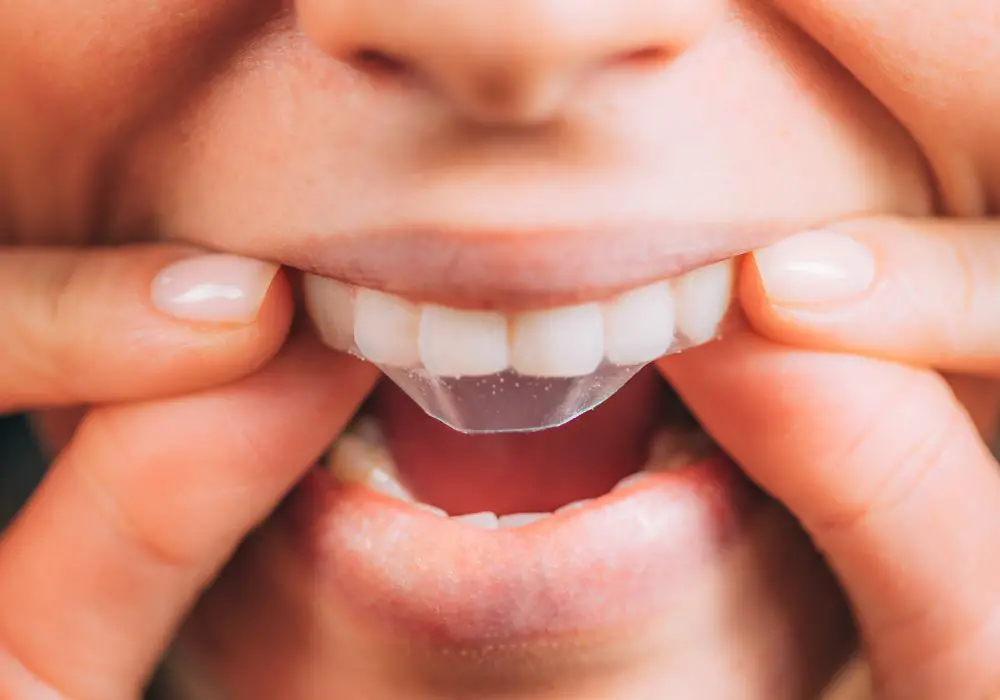
Tooth discoloration is a common problem that can happen due to various reasons. However, there are several preventive measures that you can take to avoid it. Here are some tips for preventing tooth discoloration:
- Maintain good oral hygiene: Brushing and flossing your teeth regularly can help prevent tooth discoloration caused by plaque buildup.
- Avoid smoking and tobacco products: Smoking and using tobacco products can cause yellow stains on teeth and increase the risk of gum disease and oral cancer.
- Limit consumption of staining foods and drinks: Certain foods and drinks such as coffee, tea, red wine, and berries can cause tooth discoloration. Try to limit their consumption or rinse your mouth with water after consuming them.
- Use a straw: When drinking beverages that can cause tooth discoloration, use a straw to minimize contact with your teeth.
- Consider professional cleanings: Regular dental cleanings can help remove surface stains and prevent them from becoming deeper and harder to remove.
- Use whitening toothpaste: Whitening toothpaste can help remove surface stains and prevent new ones from forming. However, it may not be effective in removing deep stains.
By following these preventive measures, you can help maintain the natural whiteness of your teeth and avoid tooth discoloration.
Frequently Asked Questions
Is it possible to whiten teeth without damaging the enamel?
Yes, it is possible to whiten teeth without damaging the enamel. Enamel is the protective layer of the teeth, and it’s important to preserve it. There are many teeth whitening methods available that are safe for enamel, such as professional teeth whitening, at-home whitening kits, and natural remedies.
What are some enamel-safe teeth whitening methods?
Enamel-safe teeth whitening methods include professional teeth whitening, at-home whitening kits, and natural remedies. Professional teeth whitening is done by a dentist and is the most effective method. At-home whitening kits are also effective and can be purchased over-the-counter. Natural remedies such as baking soda and hydrogen peroxide can also be used to whiten teeth safely.
Are there any natural ways to whiten teeth without removing enamel?
Yes, there are natural ways to whiten teeth without removing enamel. Some natural remedies include brushing with baking soda, using hydrogen peroxide, and oil pulling with coconut oil. These methods are safe and effective for whitening teeth without damaging the enamel.
How can I whiten my teeth if I have sensitive teeth?
If you have sensitive teeth, it’s important to choose an enamel-safe teeth whitening method. Professional teeth whitening may be the best option as your dentist can use desensitizing agents to reduce sensitivity. At-home whitening kits with low concentrations of hydrogen peroxide can also be effective. Natural remedies such as oil pulling and brushing with baking soda can also be gentle on sensitive teeth.
Can teeth with damaged enamel be safely whitened?
Teeth with damaged enamel can be safely whitened, but it’s important to consult with a dentist first. Your dentist can evaluate the extent of the damage and recommend an enamel-safe whitening method. In some cases, damaged enamel may need to be repaired before whitening can be done.
Is hydrogen peroxide a safe and effective way to whiten teeth?
Hydrogen peroxide is a safe and effective way to whiten teeth when used in low concentrations. At-home whitening kits with low concentrations of hydrogen peroxide can be effective for whitening teeth without damaging the enamel. It’s important to follow the instructions carefully and not to overuse hydrogen peroxide as it can cause sensitivity and irritation.


